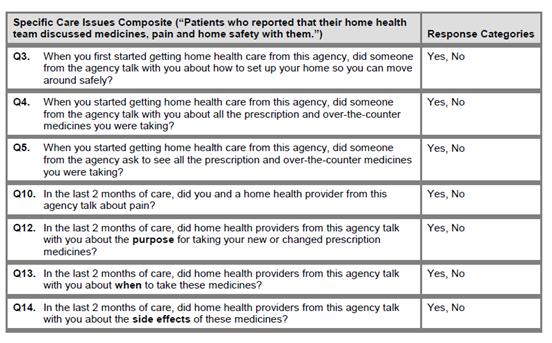Understanding the Home Health CAHPS
The patient experience survey for the Home Health Quality Reporting Program (HHQRP) is the Home Health CAHPS. These scores result in a publicly reported “Five Star” score on CMS’ Care Compare website, as well as impacting 30% of most home health agencies’ Home Health Value Based Purchasing (HHVBP) scores. If you have wondered how CMS vendors calculate these scores, this breakdown is for you!
Understanding the formula that calculates the unadjusted “top-box” score for your home health agency:
The numerator is the number of respondents who selected the most positive response category(ies) for that question, and the denominator is the number of total respondents that answered the question. Per CMS CAHPS definitions for the Home Health specific CAHPS, we detailed below how to determine if you received a “Top Box” score.
The next step is to ensure that the comparisons between home health agencies reflect the differences in performance rather than the differences in patient and/or caregiver characteristics. CMS adjusts responses for “case mix” (i.e., variations of such characteristics across home health agencies). The case-mix adjustment model includes the following:
1) Patient Age
2) Level of Education
3) Self-Reported Health Status
4) Self-Reported Mental/Emotional Status
5) Presence of Schizophrenia or Dementia
6) Residence Status (Does the patient live alone?)
7) Use of Proxy (Was the survey conducted by a proxy respondent?)
8) Completion of HHCAHPS in a language other than English
The following are the four composites for HHCAHPS and the questions impacting each score for “Five Star”, public reporting and HHVBP:





